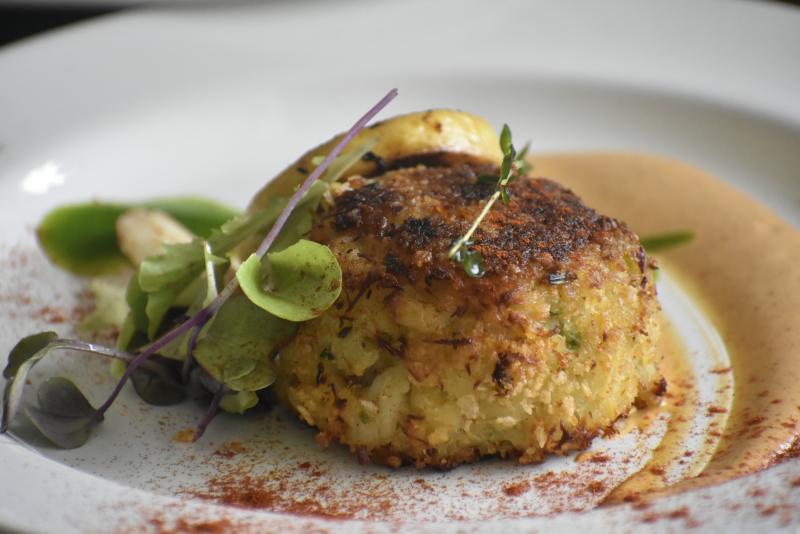The commercial crabbing fleet has ended its strike and will start soaking traps in the ocean on Monday, with fresh crab likely appearing in markets by Thursday afternoon, a local industry leader said Saturday.
Wholesale buyers and negotiators for crabbers in California and Oregon finally agreed Friday on an opening price for the coveted crustaceans after nearly three weeks of stalemate.
But the late agreement, following a 5½-week delay because of whales that were still feeding in the fishing grounds well after the traditional Nov. 15 season start, means the fleet already has missed the key Thanksgiving, Christmas and New Year’s markets.
Fishers also had to settle for less than the $3 a pound they had hoped to secure for the initial landings, instead agreeing to $2.75 per pound, said Dick Ogg, vice president of the Bodega Bay Fishermen’s Marketing Association.
Wholesalers initially had offered $2.50, and crabbers had said they needed at least $3 to make any profit. Local crabbers have said they can barely break even at a lower rate, given continually rising costs for everything from fuel and bait to insurance. The initial price is critical because so much of the season’s crab are caught in the very first days, though the price generally rises quickly thereafter, as the crab become more scarce.
California’s crab catch last year was valued at $51.8 million, including $5.6 million brought into port in Bodega Bay, $3.1 million in Fort Bragg and $8.9 million in Eureka, according to state Fish and Wildlife data. The overall crab catch accounted for about a third of the state’s $148 million in seafood landings.
Crab typically accounts for a major portion of a North Coast fisher’s annual income, augmented by salmon and a variety of other fisheries, depending on one’s boat and equipment and the permits, often scarce and very expensive, that can be acquired.
But the delays of this year’s crab season, coupled with the impacts of COVID on crab feeds and restaurant service, have affected demand for fresh crab. Much of the catch is frozen for future use, so the overall outlook on prices as the season unfolds is uncertain.
Crabbers nonetheless count on the season to get them through much of the year, augmented by salmon and other fisheries.
“We’ve started seasons really late before, and the crab were amazing,” Ben Platt, president of the California Coast Crab Association, said last week.
Ogg said the unity of the ports up and down the coast through negotiations had been fantastic, despite the pressure to go fishing and bring in some cash and pay crew members.
“The most incredible thing is that we, as a fleet, held together and made it through this horrible mess,” he said Saturday. “I’m just so impressed with everyone.”
In past price strikes, the moment agreement has been reached, crabbers would dash from their meeting halls and scramble to their boats and out to the ocean to soak their baited pots in order to haul them up with crabs as quickly as possible — what’s called a “shotgun start.”
But concerns about oversights made in the rush prompted port leaders this year to agree to a more orderly start, in part to reduce risk and level the playing field, Ogg and others said.
Most of the fleet will start going out to favored fishing grounds likely late Sunday and, by agreement, can drop their traps beginning at 8 a.m. Monday, pulling them up again beginning at 8 a.m. Wednesday.
Ogg said that means facing some sizable waves on Sunday, but hopefully little wind.
“We’re sorry all this happened,” he said, “but holy moly, we’re finally done.”
You can reach Staff Writer Mary Callahan at 707-521-5249 or mary.callahan@pressdemocrat.com. On Twitter @MaryCallahanB.
The Link LonkJanuary 10, 2021 at 02:02AM
https://ift.tt/3bkUJzr
California commercial crab price strike ends - Santa Rosa Press Democrat
https://ift.tt/2MkGRbk
Crab

No comments:
Post a Comment